Looking to add some personality to your ride? Dive into the world of exhaust sound modifications and discover how to tune your exhaust note. In this article, we’ll explore the science behind exhaust sound, from understanding sound waves to the impact of different components.
Learn how mufflers, resonators, headers and even exhaust tips can affect your vehicle’s sound. Get ready to fine-tune your exhaust note and make a statement on the road.
Key Takeaways
- Upgrading to a high-flow catalytic converter can increase volume and improve sound quality.
- Different muffler designs significantly alter the sound, with stainless steel mufflers producing a deeper sound.
- Resonators reduce noise by canceling out certain frequencies.
- The design and material of the exhaust tip can affect the sound and airflow.
The Science of Exhaust Sound

You can enhance your exhaust sound by tuning the engine’s performance. The science behind exhaust sound is fascinating. It all starts with the engine, where fuel and air mix together to create combustion. This combustion produces energy that moves the pistons, which in turn, drive the crankshaft. As the exhaust gases exit the combustion chamber, they pass through the exhaust manifold and into the exhaust system.
The exhaust system consists of several components, including the catalytic converter, muffler, and resonator. Each component plays a crucial role in shaping the sound of your exhaust. For example, the catalytic converter reduces harmful emissions but also acts as a sound dampener. The muffler further reduces noise by using chambers and baffles to muffle the sound waves.
However, if you want a more aggressive and powerful exhaust note, you can make modifications to your exhaust system. Upgrading to a high-flow catalytic converter or removing it altogether can increase the volume and improve the sound quality. Additionally, replacing the muffler with a performance-oriented one can give your exhaust a deeper and more resonant tone.
Understanding Sound Waves in Exhaust Systems

Have you ever wondered how sound waves travel through an exhaust system and contribute to the overall exhaust note? Understanding the intricacies of sound waves in exhaust systems is key to modifying and fine-tuning the perfect exhaust sound for your vehicle.
When your engine combusts fuel, it creates high-pressure exhaust gases that are expelled through the exhaust system. As these gases travel through the exhaust pipes, they create sound waves. These sound waves are characterized by their frequency, amplitude, and wavelength.
The frequency of a sound wave determines the pitch of the exhaust note. Higher frequencies result in a higher-pitched sound, while lower frequencies create a deeper, more rumbling exhaust note. The amplitude of the sound wave determines the volume or loudness of the exhaust note.
The length and diameter of the exhaust pipes also play a significant role in shaping the sound waves. Longer and narrower pipes tend to enhance low-frequency sounds, resulting in a deeper exhaust note. On the other hand, shorter and wider pipes tend to emphasize higher-frequency sounds, resulting in a more high-pitched exhaust note.
Exploring Different Exhaust Components
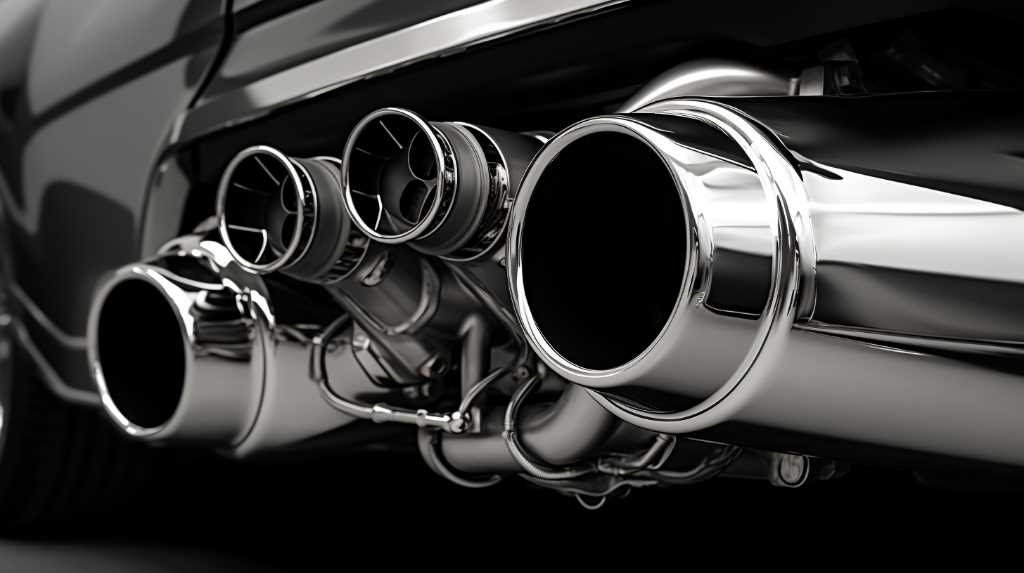
Now let’s take a look at the impact of mufflers and compare the difference between using a resonator or a straight pipe. You’ll discover how these different exhaust components can significantly alter the sound of your vehicle. Understanding the role of mufflers and deciding between a resonator or a straight pipe will give you insight into how to achieve the desired exhaust note for your car.
Impact of Mufflers
When considering the impact of mufflers on your exhaust note, it’s important to explore the different components that can make a difference in sound. Mufflers play a crucial role in shaping the tone and volume of your exhaust.
The first component to consider is the muffler’s design. Different designs, such as chambered, straight-through, or turbo-style, can significantly alter the sound produced. Additionally, the materials used in the construction of the muffler can affect the tone. Stainless steel mufflers tend to produce a deeper and richer sound compared to aluminum or fiberglass ones.
The size and shape of the muffler also play a role. Larger mufflers tend to produce a deeper and more resonant sound, while smaller ones may result in a higher-pitched tone. Ultimately, understanding the impact of mufflers and their various components can help you achieve the desired exhaust note for your vehicle.
Resonator Vs. Straight Pipe
You can choose between a resonator or a straight pipe when exploring different exhaust components. Both options have their own advantages and drawbacks, so it’s important to understand their differences before making a decision.
A resonator is a component that’s designed to reduce the noise produced by the exhaust system. It acts as a chamber that helps to cancel out certain frequencies and vibrations, resulting in a quieter exhaust note. Resonators are commonly used in stock exhaust systems to comply with noise regulations and provide a more refined sound.
On the other hand, a straight pipe refers to a section of the exhaust system that has no restrictions or sound-dampening components. This means that the exhaust gases can flow freely, resulting in a louder and more aggressive exhaust note. Straight pipes are often chosen by car enthusiasts who want to enhance the sound of their vehicle and achieve a more sporty or aggressive tone.
Ultimately, the choice between a resonator and a straight pipe depends on your personal preferences and the sound you want to achieve. Consider factors such as noise regulations, your driving habits, and the overall aesthetic appeal of your vehicle when making your decision.
How Mufflers Affect Exhaust Note
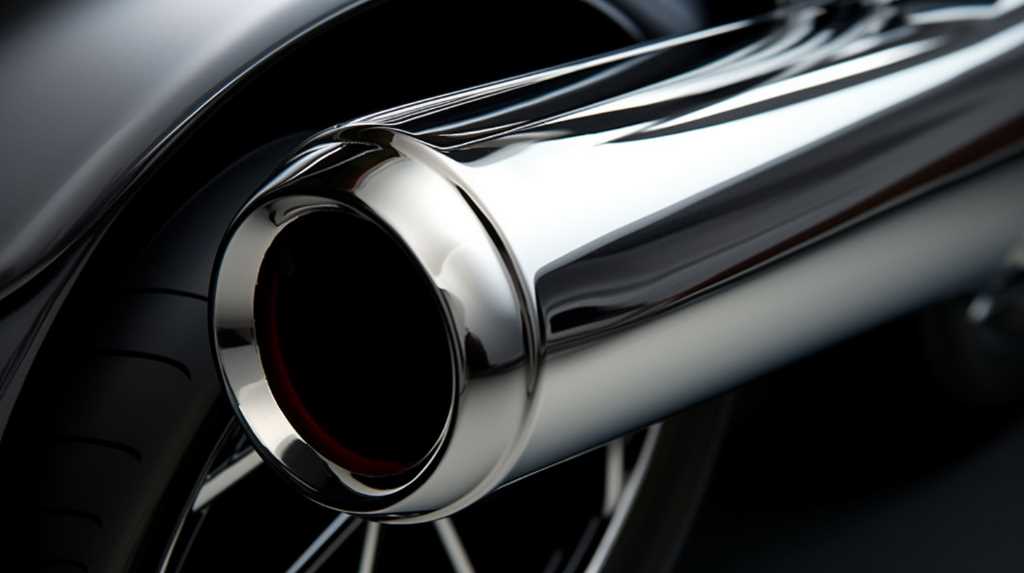
Choosing the right muffler can significantly enhance the overall tone of your vehicle’s exhaust note. Mufflers play a crucial role in shaping the sound that your car produces. They’re designed to reduce the noise produced by the engine exhaust gases, but they also affect the character and tone of the exhaust note.
One way mufflers affect the exhaust note is through their design. Different mufflers have different internal structures, such as baffles or chambers, which can alter the sound waves as they pass through. For example, a chambered muffler may produce a deeper and more aggressive tone, while a straight-through muffler can create a louder and more high-pitched sound.
The material used in the construction of the muffler can also impact the exhaust note. Stainless steel mufflers tend to produce a crisper and more metallic sound, while mufflers made of fiberglass or other sound-absorbing materials can result in a more mellow and subdued tone.
Additionally, the size and configuration of the muffler can affect the exhaust note. Larger mufflers generally produce a deeper and more resonant sound, while smaller mufflers may create a higher-pitched and more aggressive tone.
The Role of Resonators in Sound Modification
The role of resonators in sound modification is crucial for achieving the desired exhaust note for your vehicle. Resonators are components of the exhaust system that play a significant role in altering the sound produced by the engine. They’re designed to reduce or eliminate specific frequencies of sound, helping to create a more desirable exhaust note.
Resonators work by using chambers and baffles to create sound waves that cancel out or dampen certain frequencies. They’re strategically placed in the exhaust system to target and modify specific tones. By altering the frequency of the sound waves, resonators can change the overall tone and volume of the exhaust note.
One type of resonator commonly used in sound modification is the Helmholtz resonator. This type of resonator consists of a hollow cavity connected to the exhaust system through a small neck or port. As exhaust gases pass through the resonator, they create pressure waves that interact with the cavity, resulting in the cancellation or reduction of specific frequencies.
The size and design of the resonator, as well as its placement in the exhaust system, can greatly influence the sound modification. By experimenting with different resonator configurations, you can fine-tune the exhaust note to your liking.
Catalytic Converters and Sound Suppression
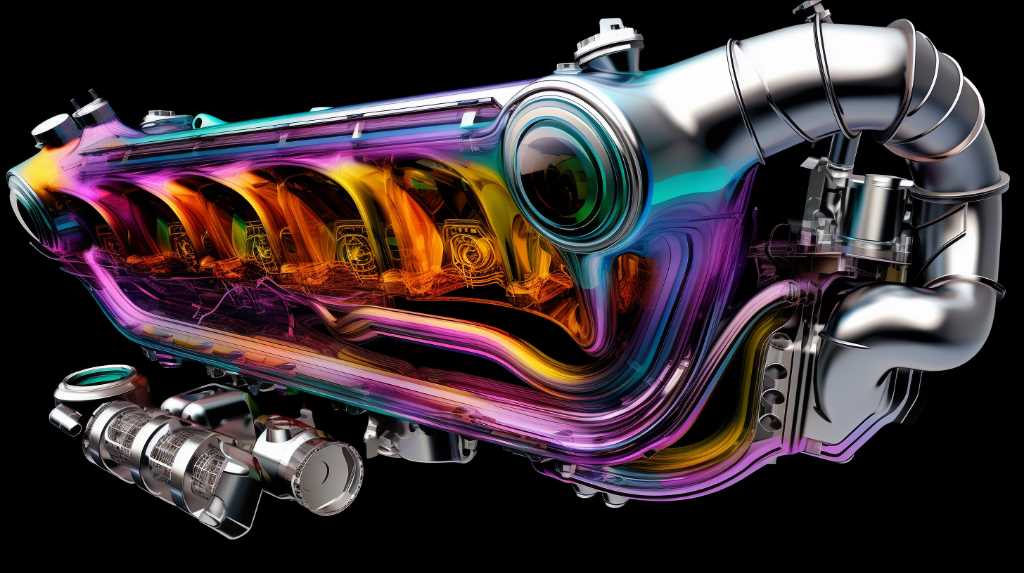
If you’re looking to minimize the sound of your vehicle’s exhaust, one option to consider is the use of catalytic converters. Catalytic converters are an essential component of a vehicle’s exhaust system, as they help reduce harmful emissions by converting them into less harmful substances. Along with their environmental benefits, catalytic converters also play a role in sound suppression.
The design of catalytic converters includes a honeycomb-like structure coated with precious metals, such as platinum, palladium, and rhodium. As exhaust gases pass through this structure, chemical reactions occur, breaking down harmful pollutants into less harmful ones. This process helps in reducing noise levels as well.
The construction of catalytic converters involves the use of sound-absorbing materials, such as ceramic fibers, which help in suppressing the sound produced by the engine. These materials absorb and dissipate sound waves, reducing the overall noise emitted by the exhaust system.
Additionally, the honeycomb structure of catalytic converters acts as a barrier, blocking and redirecting sound waves. This redirection helps in reducing the intensity of the sound that reaches the tailpipe, resulting in a quieter exhaust note.
It’s important to note that while catalytic converters do contribute to sound suppression, their primary function is to reduce emissions. Therefore, modifying or removing them solely for the purpose of achieving a particular exhaust sound may not be legal in many jurisdictions. Always ensure you comply with local laws and regulations when considering any modifications to your vehicle’s exhaust system.
Headers: Increasing Performance and Changing Sound
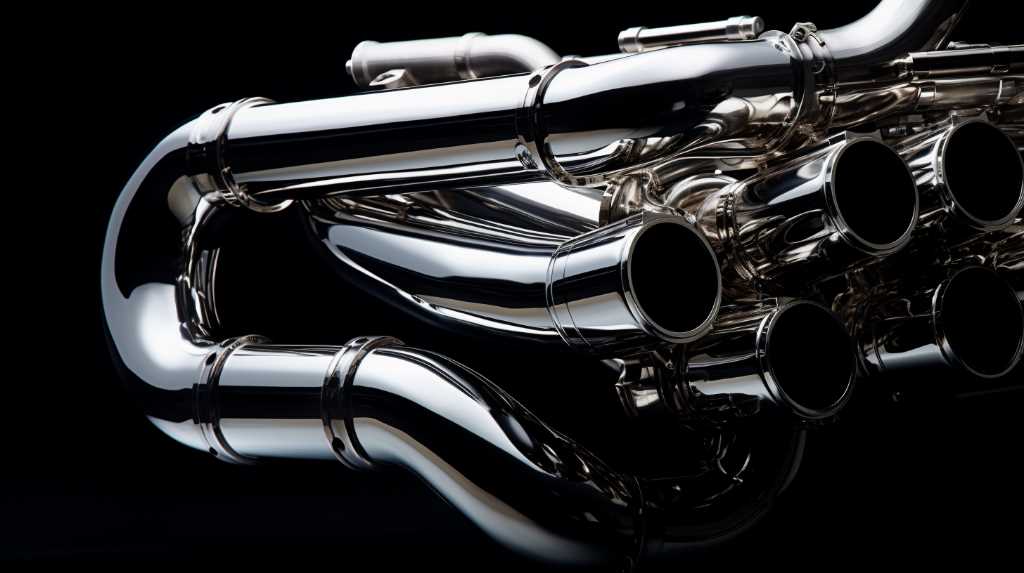
To truly enhance the performance and change the sound of your vehicle’s exhaust, you should consider upgrading your headers. Headers play a crucial role in improving your vehicle’s horsepower and torque. By replacing your stock headers with aftermarket ones, you can experience significant gains in both power and sound.
Upgrading to high-performance headers can improve exhaust flow, allowing the engine to expel exhaust gases more efficiently. This reduces backpressure and increases power output. The improved flow also enhances throttle response, providing a more exhilarating driving experience.
In addition to performance benefits, upgrading your headers can also change the sound of your exhaust. Headers are designed to optimize the exhaust note, resulting in a deeper, more aggressive sound. The new headers can produce a louder and more distinct rumble, giving your vehicle a unique and powerful presence on the road.
When choosing headers, it’s important to consider factors such as material, design, and compatibility with your vehicle. Stainless steel headers are a popular choice due to their durability and resistance to corrosion. Additionally, long tube headers are known for providing increased power gains, while short tube headers offer a more compact design.
X-Pipes Vs. H-Pipes: the Impact on Exhaust Tone
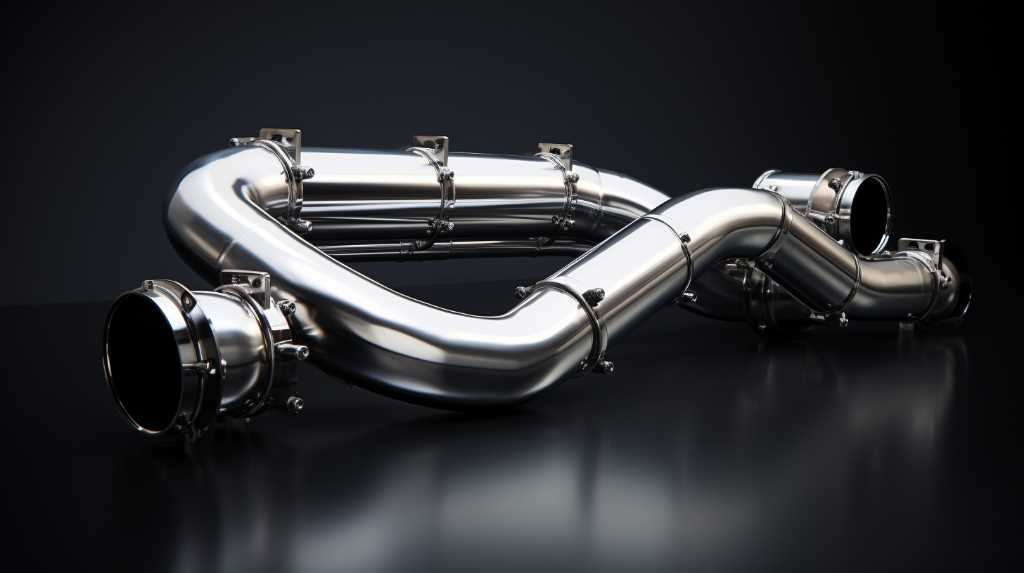
When upgrading your exhaust system, choosing between X-pipes and H-pipes can have a significant impact on the tone of your vehicle’s exhaust. Both X-pipes and H-pipes are designed to help improve exhaust flow and increase horsepower, but they achieve this in different ways, resulting in distinct sounds.
X-pipes are known for their ability to create a more aggressive and raspy exhaust note. They work by merging the exhaust gases from each bank of cylinders, allowing them to mix and equalize pressure before exiting the system. This merging of exhaust gases helps to improve exhaust scavenging, resulting in better performance and a unique sound. The X-pipe design promotes a higher-pitched tone and a sharper, race-inspired sound.
On the other hand, H-pipes are known to produce a deeper and smoother exhaust note. They work by connecting the exhaust pipes from each bank of cylinders with a crossover pipe in an ‘H’ shape. The crossover pipe helps to balance the pressure and flow between the two banks of cylinders, resulting in a more balanced and refined sound. The H-pipe design promotes a lower-pitched tone and a more classic, muscle car sound.
Ultimately, the choice between X-pipes and H-pipes comes down to personal preference. If you prefer a louder, more aggressive exhaust note, an X-pipe may be the right choice for you. If you prefer a deeper, smoother tone, an H-pipe may be more to your liking. Whichever option you choose, both X-pipes and H-pipes can help you achieve the sound you desire for your vehicle.
The Influence of Exhaust Tips on Sound

When it comes to the influence of exhaust tips on sound, there are two main points to consider: tip design and material. The design of the tip can affect the airflow and how the sound waves are dispersed, ultimately impacting the overall sound of your exhaust system. Additionally, the material of the tip can also play a role in sound, as different materials can produce different tones and resonances.
Tip Design and Sound
You can significantly enhance the sound of your exhaust system by choosing the right tip design. The shape and size of the exhaust tip can have a noticeable impact on the overall sound produced by your vehicle. A larger tip diameter, for example, can create a deeper and more aggressive tone, while a smaller tip can produce a higher pitch sound.
Additionally, the shape of the tip can also influence the sound. A straight-cut tip, for instance, can result in a sharper and more intense exhaust note, while a slanted or angled tip can produce a smoother and more refined sound. It’s important to consider your personal preferences and the desired sound you want to achieve when selecting an exhaust tip design.
Material and Sound
To truly enhance the sound of your exhaust system, it’s crucial to consider the material of your exhaust tips and how it influences the overall sound. The material of the exhaust tips can have a significant impact on the tone and volume of your exhaust note. Different materials, such as stainless steel, titanium, or carbon fiber, can produce different sounds.
Stainless steel tips tend to provide a deep and aggressive tone, while titanium tips offer a higher-pitched and more exotic sound. Carbon fiber tips, on the other hand, can provide a unique and sporty sound. It’s important to choose the material that best suits your desired sound and aesthetic preferences. By selecting the right material for your exhaust tips, you can further customize and enhance the sound of your exhaust system.
Fine-Tuning Your Exhaust Note: Tips and Tricks
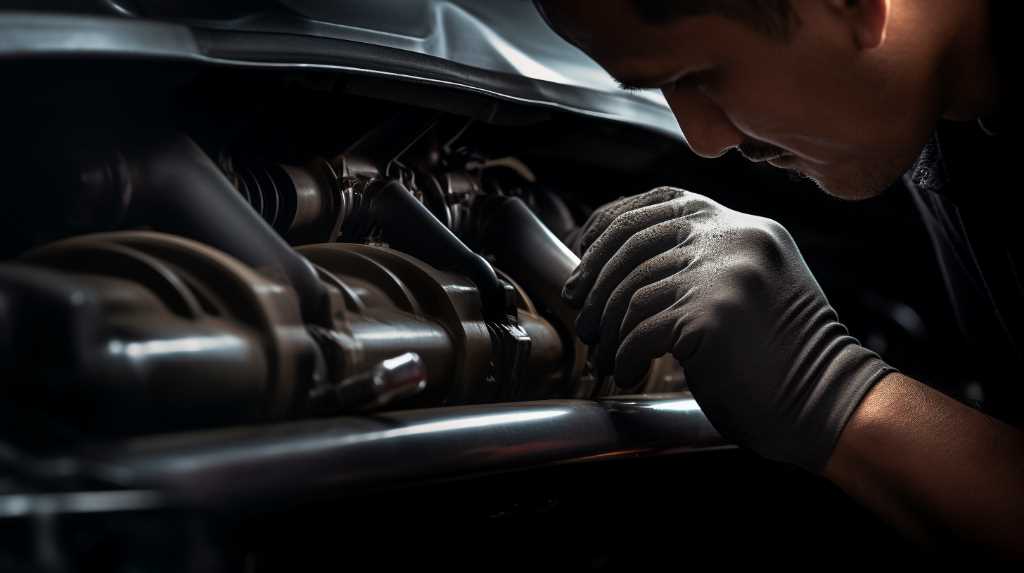
If you want to achieve the perfect exhaust note, there are several tips and tricks you can try. One effective way to fine-tune your exhaust note is by adjusting the length of your exhaust system. Shorter exhaust systems tend to produce a higher-pitched sound, while longer exhaust systems produce a deeper, more resonant tone. Experimenting with different exhaust pipe lengths can help you find the ideal sound for your vehicle.
Another tip is to consider the type of muffler you’re using. Mufflers play a crucial role in shaping the overall sound of your exhaust. Different muffler designs can produce varying tones, from aggressive and loud to subtle and refined. Switching to a performance muffler or a chambered muffler can give you the desired sound you’re looking for.
Furthermore, modifying the diameter of your exhaust pipes can also have an impact on the exhaust note. Increasing the pipe diameter can create a deeper sound, while reducing it can produce a higher-pitched tone. It’s essential to find the right balance between diameter and backpressure to achieve the best sound possible.
Lastly, consider adding a resonator or a sound amplifier to your exhaust system. Resonators help to eliminate unwanted noise and create a more pleasant sound. Sound amplifiers, on the other hand, can enhance the exhaust note by amplifying certain frequencies.
Frequently Asked Questions
Can I Modify My Exhaust System to Make My Car Louder?
Yes, you can modify your exhaust system to make your car louder. By installing a performance muffler or removing the muffler altogether, you can achieve a more aggressive and louder exhaust sound.
Will Changing My Muffler Affect My Car’s Performance?
Changing your muffler can affect your car’s performance. By altering the exhaust flow, it may increase horsepower, torque, and fuel efficiency. However, if not done properly, it could also decrease performance and cause engine issues.
What Are the Legal Implications of Modifying My Exhaust System?
Modifying your exhaust system can have legal implications. It’s important to check local laws and regulations regarding noise levels and emissions to ensure you stay within the legal limits.
How Much Does It Typically Cost to Modify an Exhaust System?
Modifying your exhaust system can cost anywhere from a few hundred to a couple thousand dollars, depending on the type of modifications you want. Prices vary based on the brand, materials, and complexity of the job.
Are There Any Potential Drawbacks or Negative Effects of Modifying My Exhaust System?
Modifying your exhaust system can have potential drawbacks or negative effects. These can include decreased fuel efficiency, increased noise levels, and potential legality issues. It’s important to consider these factors before making any modifications.
Conclusion
In conclusion, modifying your exhaust system can have a significant impact on the sound of your vehicle. By understanding the science of exhaust sound and exploring different components such as mufflers, resonators, headers, and pipes, you can fine-tune your exhaust note to your liking.
Additionally, the choice of exhaust tips can also influence the overall sound. With a little knowledge and experimentation, you can create a unique and personalized exhaust sound that enhances your driving experience.
Related Articles
The Ultimate Guide to Performance Car Exhaust Systems
Next Exhaust Article: Unlocking Hidden Power: The Role of High-Flow Catalytic Converters
Previous Exhaust Article: The Science of Exhaust Flow: How Mandrel Bends Improve Performance

Hey there, I’m Terra Frank, the driving force behind Motion Performance Motor Sports. I’m thrilled to have you here, exploring the fascinating world of cars, trucks, and everything related to automotive performance and accessories.




